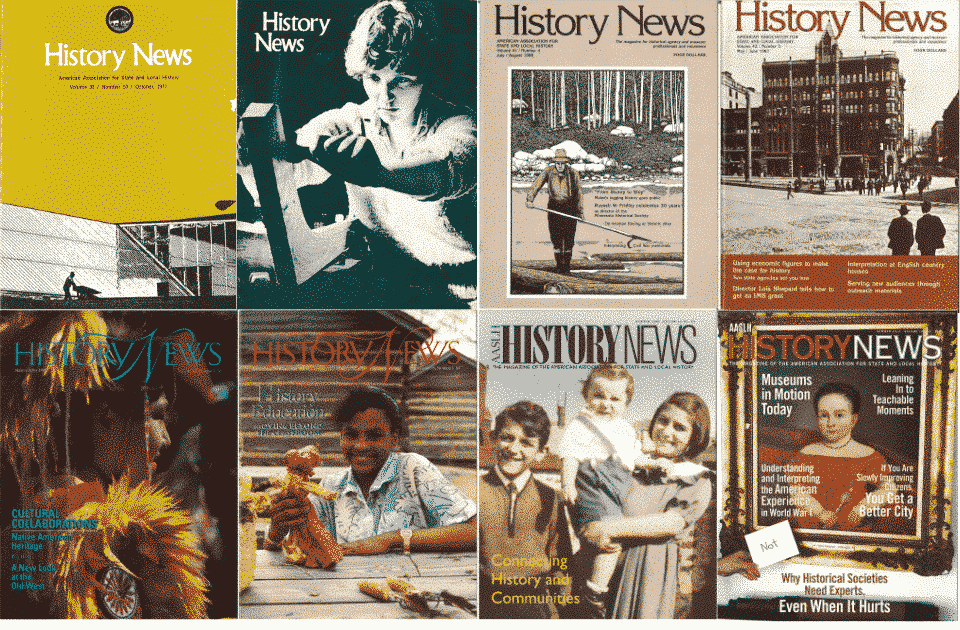
By Aja Bain, Associate Editor, History News
When you receive the latest issue of History News magazine in the mail, you’ll probably notice some changes. Some are aesthetic, like a newly redesigned masthead and a more streamlined layout that gives our articles greater visual impact. Other changes are structural, like the addition of new columns and voices that emphasize AASLH’s strategic goals and highest values.
This isn’t the first time the magazine has been reinvented, of course. When you’ve been publishing since 1941, some things are bound to change over time. What started out as a modest eight-page bimonthly newsletter of AASLH and member activities has grown into a 40+ page space where public historians from around the country share their research, experiments, techniques, and lessons learned as they work to interpret state and local history in relevant and meaningful ways.
One of the most recognizable parts of the magazine today is the Technical Leaflet in the middle, which provides practical how-to tips on a variety of topics. This section grew out of a quite forward-thinking crowd-sourced column inaugurated in 1949 known as “Shop Talk: Helpful Hints for Harassed Historians.”

Although “Shop Talk” focused on pressing issues of the day like mimeographing newsletters and recording oral histories of Civil War veterans, it also echoes timeless concerns like increasing museum membership and constructing exhibits on a budget. Perusing these vintage issues reminds us that although both the field and the world have greatly changed since then, we as public historians build our future on a firm foundation of community, the open exchange of ideas, and a willingness to try new things to reach our goals.
“Somebody somewhere has solved the problem that bothers you. Somewhere somebody can use your ideas. Here is the meeting place for questions and answers. Send in yours.” Shop Talk, December 1949
With a fresh editorial vision, we at History News are focusing on amplifying diverse voices and experiences while connecting field-wide conversations to the needs of local institutions. New sections in the magazine will spotlight people sharing history in unexpected ways, while our content will continue to respond to the issues of history relevance and equity that unite our members. Moving forward, our overarching goal is to make the magazine an inclusive space where history practitioners of varied backgrounds, roles, perspectives, locations, and beliefs find themselves represented, challenged, and inspired. We hope you’ll join in as we discuss and debate our field’s big issues and concerns, and we hope to be your meeting place for questions and answers for another seventy-eight years and beyond.
Members can read the new issue online for free before it hits mailboxes. Find it in the Resource Center.
Have an idea for an article or leaflet? Let’s brainstorm.



